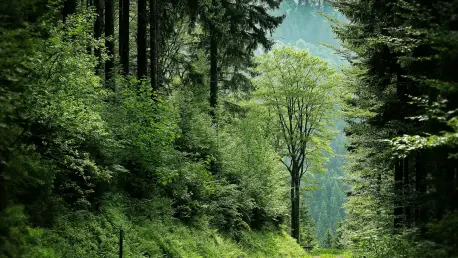Northeastern Minnesota is deeply entrenched in a battle against nature as the region grapples with the relentless budworm outbreak that has persisted for five years. By 2024, this voracious pest had already stripped over 700,000 acres of trees of their foliage, marking it as the most sizable incident since the notable outbreak of the 1950s. The unyielding life cycle of the budworm is well-documented; typically, these outbreaks have a duration ranging from 8 to 10 years, during which budworm populations climb beyond the control of natural predators and environmental diseases. The current turmoil has heavily impacted spruce and balsam fir trees, with the latter showing the greatest vulnerability to the pest’s insatiable appetite. This widespread defoliation risks leading to extensive tree mortality, particularly as trees encounter other stress elements such as dehydration amidst already challenging environmental conditions.
The Threat of Wildfires and Landowner Strategies
The threat of wildfires looms ominously over Minnesota’s dense forests following a budworm outbreak, primarily due to the accumulation of dead balsam fir trees. Yet, interestingly, experts like Sarah Waddle argue that, over time, these outbreaks could potentially reduce wildfire risks. This is because as the trees decay, they become less flammable. In light of the formidable challenges posed by the current situation, environmental educators Sarah Waddle and Anna Stockstad from the University of Minnesota have developed a comprehensive guide aimed at assisting landowners. The guide emphasizes the importance of maintaining tree health while promoting biodiversity within forest ecosystems. By encouraging landowners to plant a diverse array of tree species, it aims to enhance forest resilience and mitigate the future impact of such natural phenomena. This proactive approach to managing tree health stands as a critical step toward ensuring the long-term vitality of Minnesota’s woodland areas.
Addressing Environmental Challenges with Education
The guidance offered by Waddle and Stockstad goes beyond simple fixes, delving into the intricate dynamics behind the budworm issue as well as the broader interactions between natural cycles and human interventions. The aim is to educate landowners and equip them with the necessary insights to effectively address and adapt to environmental challenges. This comprehensive guide, available at the Cook County Community Center or online, provides practical advice for managing woodland properties. Key suggestions include expanding the variety of tree species, a crucial strategy for reducing the impact of future pest outbreaks. Conversations with Sarah Waddle explore various strategies to mitigate the current outbreak, emphasizing a holistic approach to forest management. This initiative demonstrates a committed effort to empower people in environmental stewardship, combining scientific knowledge with practical actions to foster strong forest ecosystems in Minnesota. Available resources aim to enrich understanding and encourage proactive participation in preserving these vital lands.









